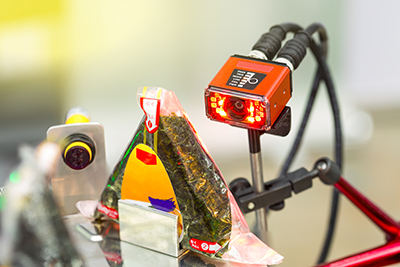
If you've been keeping up with the latest advancements in the automotive, manufacturing, and healthcare industries, you've heard the term "machine vision." But what is it? How is it used? And what do you need to know about it? Here's your beginner's guide to machine vision!
What Is Machine Vision?
The human eye is a remarkable sensor. The information it captures provides the brain with the ability to interpret its surroundings in an instant. Since the invention of robotics and automated systems, engineers have tried to provide their creations with the ability of sight.
Machine vision cameras substitute the human visual sense. Computers can mimic the brain by adding judgment and interpretation capabilities. Here are the three main steps for a machine vision system.
- Acquisition – captures images with cameras, optics, and lighting
- Analysis – uses software and algorithms to make an evaluation
- Integration – communicates a decision to an automated system
Common Applications for Machine Vision
Machine vision has found its way into many industries, ranging from agriculture to security to transportation. Here are just a few areas where machine vision has improved the efficiency of automated processes.
Product Inspection. Use machine vision to detect imperfections, cracks, and fissures in parts and products. Then sort out the damaged products.
Part Identification. Machine vision can be used for bin picking, identifying variants, or helping to find items that don't belong.
Tracking. By the use of barcodes or physical characteristics, machine vision systems can track parts throughout manufacturing and distribution.
What You Need to Know About Machine Vision
It's important to know some fundamentals about machine vision systems before you decide to integrate them into your automated processes. Here are some key parts of the system you'll need to consider.
System Design
When building your machine vision system, you need to consider what type of system you're going to use. General-purpose machine vision systems can be PC-based, smart camera/smart vision, or a hybrid of the two.
Cameras/Optics
You'll need the right camera and lens. Your camera sensor might need to detect visible light in color or black and white. Other cameras detect infrared light. Lenses can have a wide-angle or a narrow focus. Some lenses offer crisper images. Others focus faster for quicker processing.
Lighting
Your machine vision system won't get you the results you need if it can’t see the object you want to capture. Fluorescent, halogen, and xenon lighting are a few options. But new, LED alternatives are starting to replace these technologies in many applications. Lighting for proper exposure is a must.
Software
Machine vision software is available in a dizzying array of packages and libraries. You'll need sufficient algorithm depth and the right communications capability to interface with your automated systems. Determine if you need edge detection, OCR, geometric search, and more.
Pick the Right Machine Vision Camera
Phase 1 Technology Corp offers a vast array of machine vision cameras to fit your application. Choose cameras from leading manufacturers that can solve even the toughest challenges. Let the experts at Phase 1 help you select the right camera for your needs.
